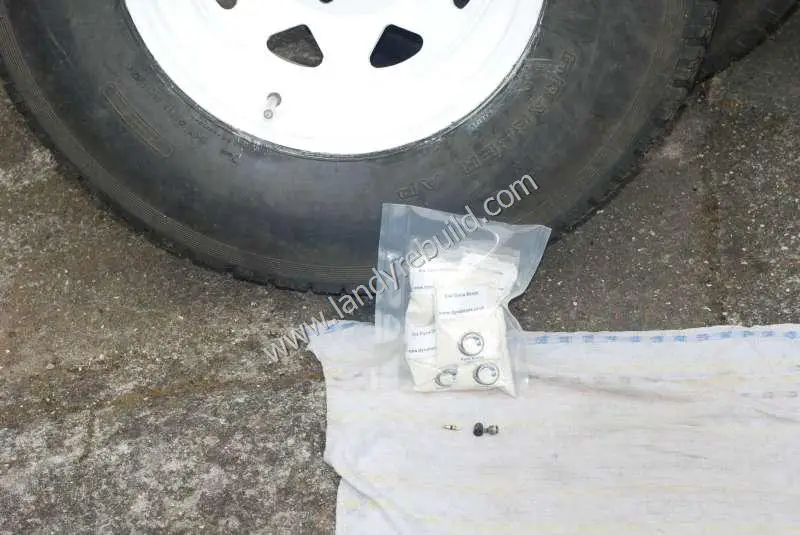The majority of riders don't change their own tyres. Instead they rely on a fitment centre to take the old tyre off and install the brand new rubber. The wheel is then placed in a machine which spins it up to a maximum of 300rpm. This is called dynamic balancing. The machine informs the operator where on the wheel the little balance weight should be fixed, and how much it should weigh.
These little weights used to be made of lead, but nowadays they are zinc, and stuck on with self-adhesive tape.
Another method of balancing is called static balancing. The wheel is not spun, but suspended vertically, and allowed to come to rest. Obviously the heaviest part of the wheel will end up at the bottom.
Despite having my wheels balanced at a fitment centre, I found that on a straight, smooth road, if I took my hands off the handlebars*, the bike would tend to pull slightly to the right. I therefore resolved that the next time I changed my tyres, I would install some Dynabeads.
*Obviously I'm not advising you to do this. Riding motorcycles is dangerous.
Following our relocation from the UK to France, the Avon Storm tyres had seen better days. The front had suffered a sidewall cut, and the rear had a puncture. I therefore bought a pair of Metzeler Roadtech Z6. At that time I did not have the equipment to change them myself, so took the wheels to a local fitment centre. I specifically asked that they did not balance them.
Once I got them home, I removed the valve cores, and poured in the Dynabeads. These are tiny ceramic beads. When the tyre rotates, centrifugal forces cause them to move outwards, and they become evenly distributed, balancing the tyre. Unfortunately I neglected to take any photographs of the installation process, but I had carried out the same procedure on my Land Rover 110, and I do have a photo of that!
They're a bit fiddly to get into the valve stem; they are supplied with a small plastic bottle and a length of clear tubing. I found the trick is to pour them in very slowly, a few at a time. Lots of tapping of the tube was required, but eventually all the beads went in.
Quantities required:
The front tyre took 1 oz (29 grams).
The rear tyre required 2 oz (59 grams).
The valve cores were then reinstalled and the tyres reinflated. I went for a test ride.
So, the verdict:
Definitely worthwhile. The ride is a lot smoother, and now if I take my hands off the handlebars* on a straight, smooth road, the bike remains perfectly straight.
*Obviously I'm not advising you to do this. Riding motorcycles is dangerous.
Dynabeads seem to balance the tyres far more effectively than wheel weights. I will certainly keep using them.

